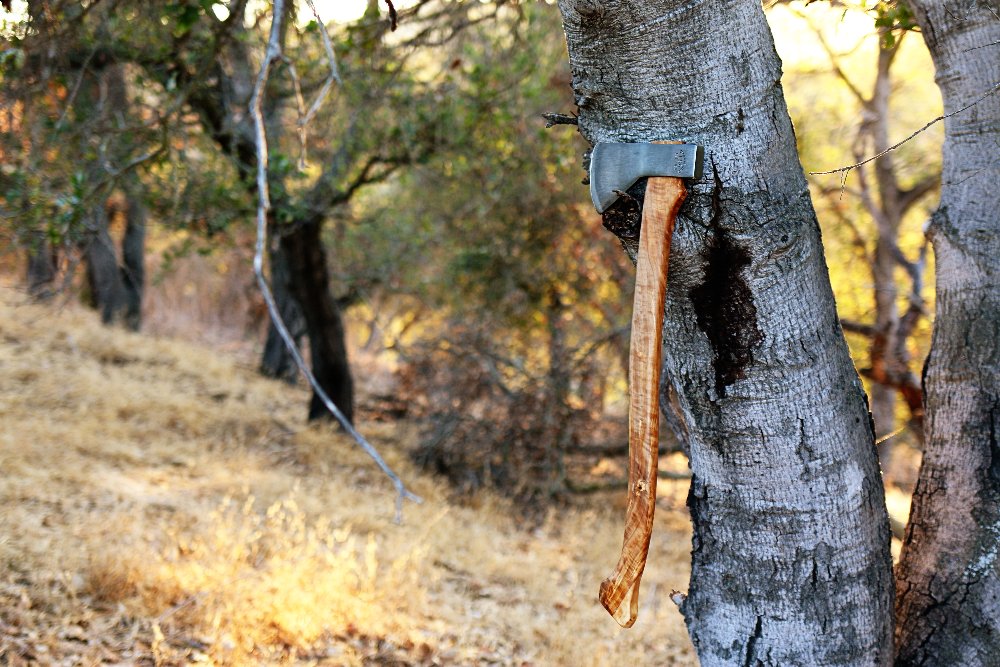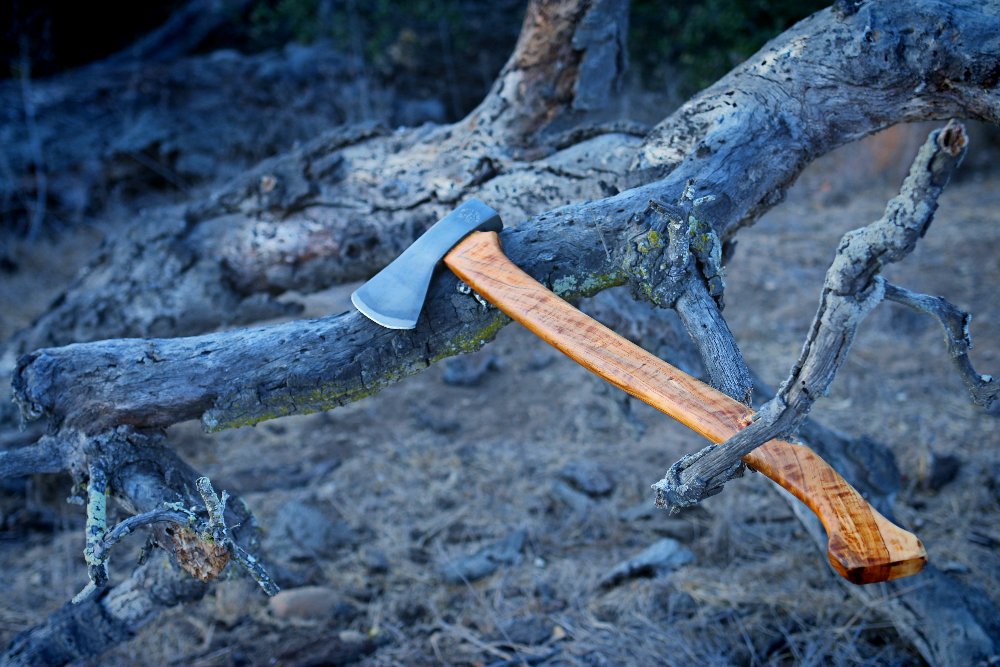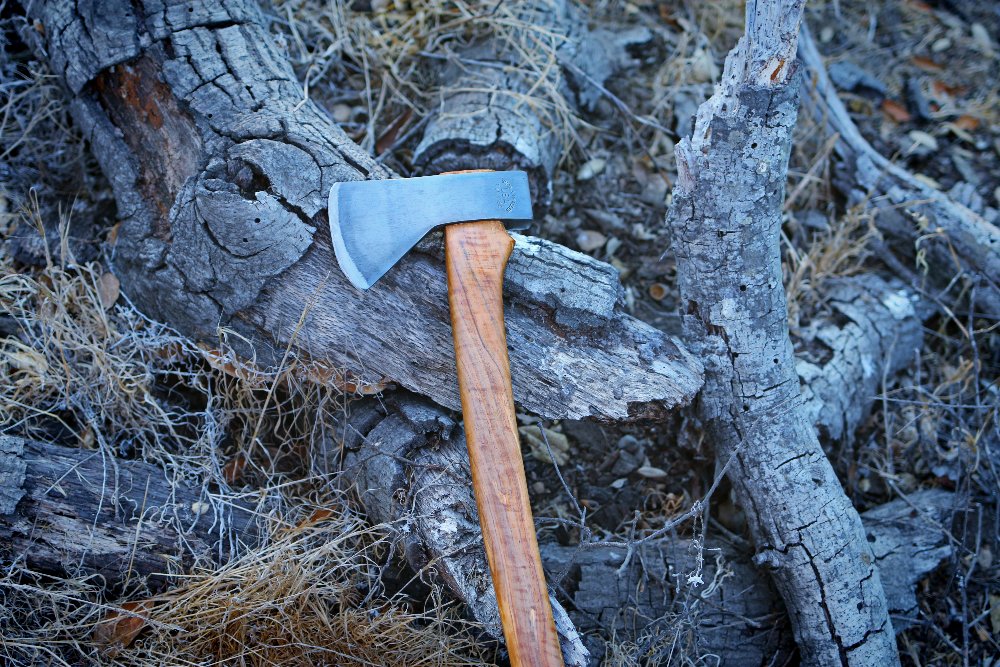Jason is a craftsman from California who recently bought a Snow and Nealley Hudson Bay head. He fitted it to a handmade olivewood handle. Below, he reviews his experience with the American steel axe head.
When we talk about heritage there are many directions from which we come. This land I walk was first documented in 1769 by Spanish Conquistadors. Their memories we occasionally cross paths with, like the cougars that roam these hills. Down in this canyon Spanish treasure was buried when the Mission San Juan came under siege. The man who hid the mission gold was killed in the attack and the gold has never been found.
A hundred years later, across the continent axe makers Snow and Nealley embark on the journey into Maine axe making in 1864. Their legacy carries on. A hundred and fifty years pass, and today I have a descendant of the early axes produced in the North East – a Snow & Nealley Hudson Bay pattern axe. I’d asked several questions as a skeptical buyer. Comparing domestic made to the European makers. Even had a look at the boutique hand forged makers of North Carolina, Toronto, and Latvia. Watched hours of You Tube to see vignettes of the lumbermen, hipsters, and indigent appearing axemen. And beyond all the hype and glory of Scandinavian scrap iron – (more on that later)- I found in a quiet corner of the world what I had been seeking. A true high quality 100% American made axe for a bargain price.
When it comes to axes or hatchets, there are a few steel choices to consider. But for the last 200 years or so the premium choice has been Carbon Steel. Today, you will find CKRT manufacturing in Taiwan using 1045 Carbon Steel, a mid range carbon steel, inexpensive, not a really tough steel, but impact resistant. You can chop roots in the dirt with this steel and just watch the edge mash up. Not a great edge holding steel. Then, the modern True Temper, manufactured in Nebraska for Ames, utilizes a 1060 Carbon Steel. Now we’re getting into a true medium carbon steel that you can harden and retains the toughness to be smashed about. Still not a great choice for keeping an edge sharp. Then, I contacted The Working Axes, an online retailer for the Snow & Nealley brand. And was told it will take a couple days for a response, they needed to contact the fellow in the shop. The fellow in the shop is Amish, and as we know the Amish are known to not be really prompt on electronic technology. I receive a reply, they are 1080 carbon steel. Forged here in the USA, a mid-western forge, and final ground and heat treated in Smyrna, Maine — by the Amish. I think to myself, this is going to be interesting, and asked a few more questions and decided to place an order for a loose head. There is practically no one on the planet selling factory new loose heads. Well 1080 carbon steel is now in the realm of high carbon steel. Possessing the ability to be hardened very well, sharpened to a razors edge, and tempered or drawn down to be soft and flexible in the body of the tool. Ideal traits for a striking/cutting tool. And lastly, the Scandinavian scrap steel. There is a major manufacturer in Europe who will not disclose their steel type. They spin their marketing hype along the lines of ecologically responsible reclaimed steel. It’s speculated to be a little like grandmas cooking. No recipe, just mix it until it looks right but no one could ever recreate it. And this maker wants $200-$300 for their axes.
Impressed during the unboxing, when you set it down on the bench, you can hear the ring in the steel. A clear sign of a hardened steel compared to the dull thump of lesser alloys or poor heat treat. A common shop technique is to take a metal file, and draw it across the edge, and you can feel if it skates off, a hard steel, or if it bites, a softer steel. The Hudson Bay reveals that you would be very tired if you attempted to sharpen with a file, a task best left to a stone. Snow & Nealley definitely got the heat treat right. The eye is punched square and center, with just a hair difference in cheek thickness seen with the eye. All forge marks are ground clean, and a beautiful hot stamped makers mark on the poll, crisp, clear, and deliberate well placed. All signs showing the makers had pride in their work. And it looks a lot better than axes priced 10 times more.




Share your thoughts